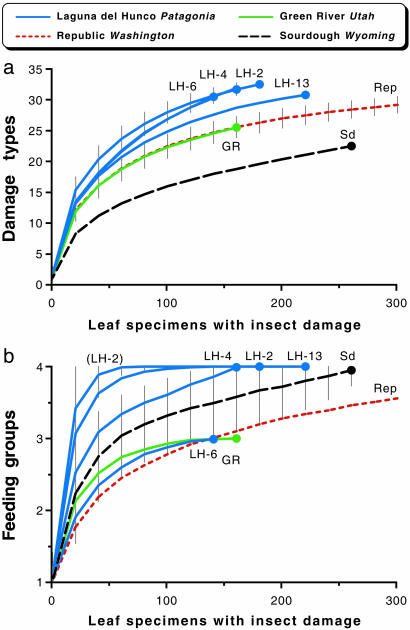Fig. 2.
Resampling curves for insect-damage diversity on herbivorized dicot leaves for bulk floras, from the LH (four major quarries at distinct stratigraphic levels: LH-2, LH-4, LH-6, and LH-13; see text), Republic (Rep), Green River (GR), and Sourdough (Sd) floras. The curves show the means of 5,000 randomized resamples, with replacement, of the number of damage types (a) or functional feeding groups (external feeding, galling, mining, and piercing-and-sucking) (b) found on the number of herbivorized dicot leaves indicated on the horizontal axis (horizontal spacing of 20 specimens), up to the total number of collected herbivorized specimens. Curve endpoints are enlarged to increase visibility of separate curves. Curves for Republic have no endpoint depicted because this sample has 507 herbivorized specimens, terminating outside the graphed area. Error bars of ±1σ are placed on the most diverse North and South American curves in each graph. The percentage of leaves with insect damage was 33.1%, 13.1%, 29.5%, and 29.3% for LH-2, LH-4, LH-6, and LH-13, respectively, suggesting a taphonomic bias at LH-4, and 49.8%, 19.4%, and 34.8% for Republic, Green River, and Sourdough, respectively.

